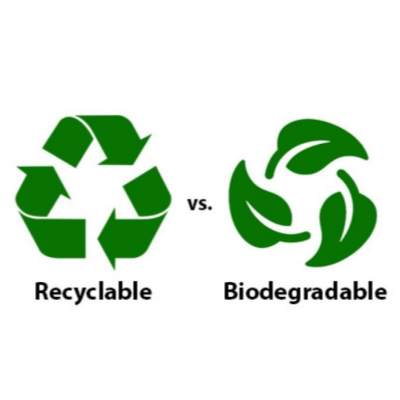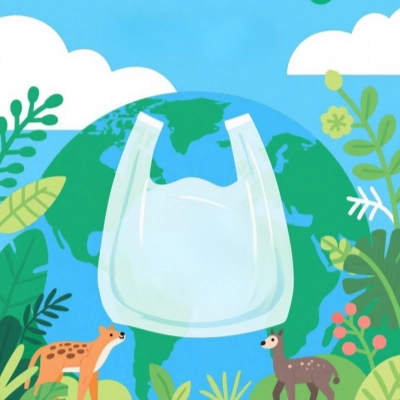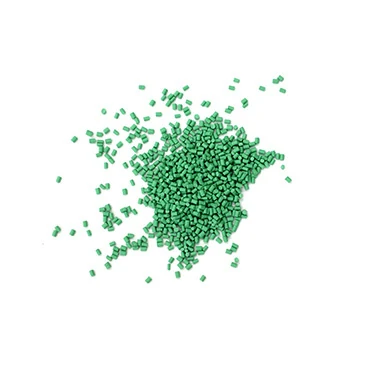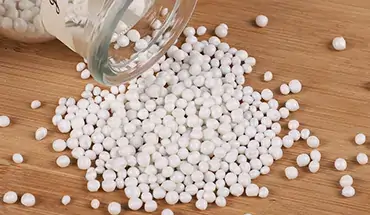The global waste crisis continues to intensify, and there is an urgent need for innovative and sustainable solutions. In the battle to reduce waste, degradability (biodegradability) and recyclability are two key paths. Although both aim to alleviate the pressure of waste on the environment, there are significant differences in their mechanisms of action, technical advantages, and limitations. This article will deeply analyze the two paths, from the dimensions of environmental impact, economic feasibility, and practical application, and explore whether there is a universal “ultimate solution” or whether a more refined collaborative strategy needs to be adopted.
Biodegradable: Returning to Nature
Biodegradable materials decompose into simpler substances, such as carbon dioxide, water, and biomass, through the action of microorganisms like bacteria and fungi. This process occurs under specific environmental conditions, including adequate moisture, oxygen, and temperature. The timeframe for biodegradation varies significantly depending on the composition of the material and the surrounding environment. For instance, a banana peel might decompose in weeks, while a biodegradable plastic bag could take months or even years. One way or another, biodegradable plastic bags will eventually return to nature. And unlike traditional plastic bags, once discarded, they remain permanently.
Advantages of Biodegradability:
- Reduced Landfill Burden: Biodegradable materials break down naturally, minimizing the accumulation of waste in landfills, which contribute to greenhouse gas emissions and leachate contamination.
- Composting Potential: Certain biodegradable materials can be composted, enriching soil with valuable nutrients and reducing the need for synthetic fertilizers.
- Lower Reliance on Fossil Fuels: Some biodegradable materials are derived from renewable resources like plants, lessening dependence on finite fossil fuels used in traditional plastic production.
- Reduced Pollution: In ideal conditions, biodegradation reduces the persistence of waste in the environment, minimizing pollution of land and waterways.
Disadvantages of Biodegradability:
- Specific Environmental Requirements: Biodegradation requires specific conditions that are not always present in landfills or natural environments. In anaerobic landfills (lacking oxygen), decomposition is significantly slower and produces methane, a potent greenhouse gas. Some biodegradable plastics require industrial composting facilities with high temperatures to break down effectively, which are not universally available. “Biodegradable” labeling can be misleading, as some products only break down under specific.
- Potential for Contamination: If biodegradable materials are mixed with conventional plastics during recycling, they can contaminate the recycling stream and compromise the quality of recycled products.
Recyclability: A Circular Economy
Recycling involves collecting and processing discarded materials to create new products, thereby extending their lifespan and reducing the need for virgin resources. This process forms the foundation of a circular economy, where resources are continuously reused and repurposed. Materials like paper, plastic, glass, and metal can be recycled multiple times, conserving energy, reducing waste, and minimizing environmental impact.
Advantages of Recyclability:
- Resource Conservation: Recycling reduces the demand for virgin materials, preserves natural resources, and minimizes habitat destruction associated with resource extraction.
- Energy Savings: Manufacturing products from recycled materials often requires less energy compared to using virgin resources, reducing greenhouse gas emissions. (e.g, recycled aluminium uses only 5% of the energy of virgin aluminium).
- Reduced Landfill Space: Recycling diverts waste from landfills, extending their lifespan and minimizing the need for new landfill construction.
- Economic Benefits: Recycling can create jobs and stimulate economic growth in the recycling industry.
Disadvantages of Recyclability:
- Quality Degradation: Recycled materials may exhibit a slight decline in quality with each recycling cycle, limiting the number of times they can be reused.
- Contamination Issues: Improper sorting and contamination of recyclable materials can render them unusable, leading to their disposal in landfills.
- Complex Sorting Process: Effective recycling requires meticulous sorting of different materials, which can be a complex and costly process.
- Limited Infrastructure: Recycling infrastructure and collection programs vary significantly across regions, limiting access to recycling services for some communities. Not all materials are recyclable, and certain types of plastics pose challenges for recycling processes.
The Verdict: A Synergistic Approach
Biodegradable vs. Recyclable? Declaring a definitive victor between biodegradability and recyclability is an oversimplification. Neither approach offers a universal solution to the waste crisis. Instead, a more nuanced and integrated approach is necessary, recognizing the unique strengths of each process and tailoring solutions to specific material types and applications.
A Scenario-Based Solution:
The optimal approach often depends on the specific material and its intended use. For instance:
Single-Use Items with Limited Recyclability: For items like food packaging, disposable cutlery, and mailer bags, where recycling is challenging or impractical due to contamination or material complexity, biodegradability, particularly compostability, presents a more viable solution. These items are often soiled or composed of mixed materials, making them unsuitable for recycling. Focusing on certified compostable materials for these applications can significantly reduce landfill burden and potentially contribute to soil enrichment. (After PostNL of the Netherlands adopted PBAT & starch mailer bags, the residue of microplastics was reduced by 92%)
Durable Goods with High Recycling Potential: For products like beverage bottles, aluminum cans, and plastic containers with well-established recycling infrastructure, prioritizing recyclability is more effective. These materials can be recycled multiple times with minimal quality degradation, significantly conserving resources and energy. (Implementing robust recycling programs, coupled with consumer education and extended producer responsibility schemes, is crucial for maximizing recycling rates.)
Medical and Hygienic Products: Biodegradability might be preferred to reduce the risk of contamination and disease transmission for items requiring sterility and hygiene, such as medical implants or disposable diapers. However, careful consideration of the biodegradation process and potential environmental impacts is essential.
Ultimately, the most sustainable approach involves a combination of strategies, including:
- Reduce Consumption: The most effective solution is to reduce the consumption of disposable products altogether. (The global per capita plastic consumption needs to be reduced from 43 kilograms in 2020 to 20 kilograms in 2040 -Alan MacArthur Foundation).
- Reuse: Extending the lifespan of products through reuse and repurposing before considering disposal.
- Design for Recyclability and Compostability: Designing products with materials and structures that facilitate recycling or composting.
- Improve Waste Management Infrastructure: Investing in robust waste management systems, including efficient sorting facilities and composting infrastructure. (The European Union plans to build 100 demonstration plants for chemical recycling by 2025)
- Educate Consumers: Raising public awareness about proper waste disposal practices and the importance of recycling and composting. (“3R” policy in Japan has reduced household waste by 40%)
The “ultimate solution” to the waste crisis is not a singular technology but a comprehensive and integrated approach encompassing source reduction, material innovation, infrastructure development, and behavioral change. By leveraging the strengths of both biodegradability and recyclability in a strategic and context-specific manner, we can move towards a more sustainable future with reduced waste and a minimized environmental footprint.





